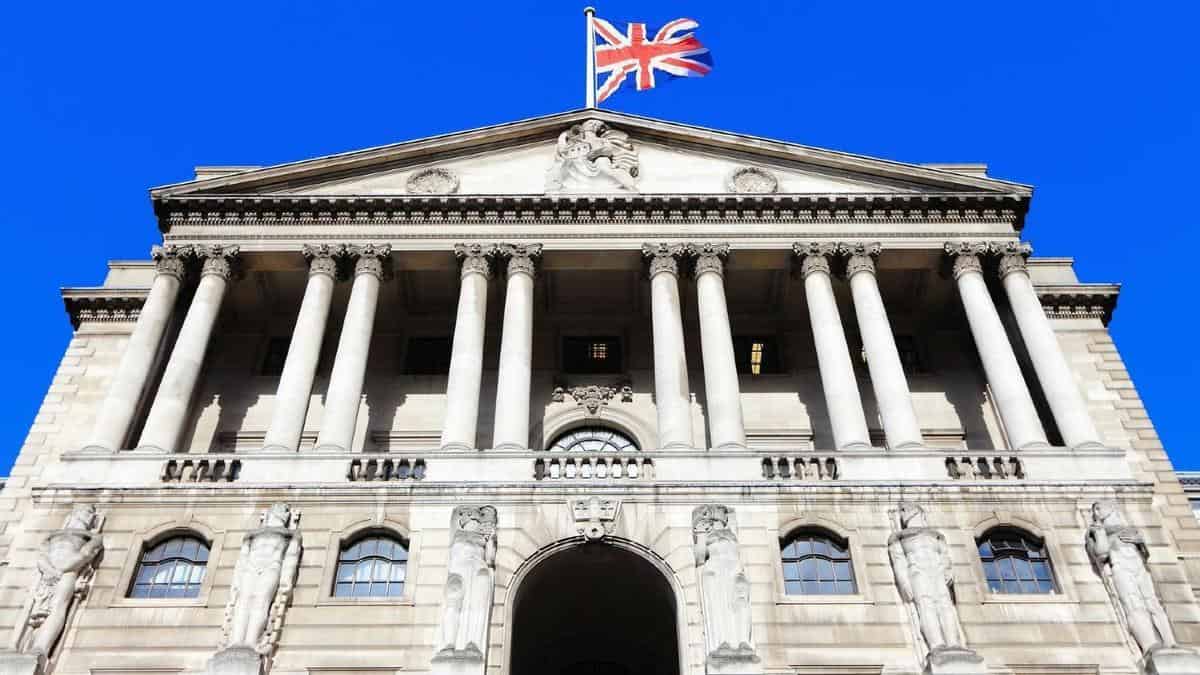The Bank of England left its monetary policy unchanged on Thursday, but warned of a more pronounced period of above-target inflation in the near term.
Policymakers unanimously decided to keep the Bank’s main lending rate at a historic low of 0.1%, where it has been since March 2020, and voted 7-1 to maintain the quantitative easing program at £895 billion ($1.25 trillion).
The central bank also raised its inflation forecasts, as expected by economists, following two consecutive months of above-forecast readings.
“Overall, Bank staff now expect inflation to rise materially further in the near term, temporarily reaching 4% in 2021 Q4 and 2022 Q1, 1½ percentage points higher than in the May projection,” the bank said in its monetary policy report.
The Bank’s Monetary Policy Report said the temporary rise in the consumer price index is primarily due to rising energy and other goods prices, which are set to moderate in the medium term to bring inflation back toward its 2% target.
U.K. GDP is expected to have risen by 5% in the second quarter of 2021, leaving it around 4% below pre-pandemic levels and slightly above the BOE’s projections in its May report.
Sterling edged 0.2% higher to hover just above $1.39 on Thursday afternoon.
Unemployment outlook
Bank of England Governor Andrew Bailey told CNBC on Thursday that while the growth figures suggest the economy is recovering, this needed to be put into context.
“As of now, the level of economic activity is still about 4% lower than it was at the end of 2019, pre-Covid. In any normal state of the world, that is a big number,” he told CNBC’s Joumanna Bercetche.
“It is only not a big number in the sense that we have had such huge gyrations in the economy over the last 18 months. We still have 4% to catch up and even then, of course, we have had no growth over nearly two years.”
Notably, the U.K.’s unemployment rate has declined over the last two quarters to 4.8% in the three months to May, though it remains around one percentage point higher than its pre-Covid rate. The Bank now expects the rate to decline consistently, having peaked at a much lower level than previously anticipated.
“I think it is particularly good news on unemployment because we have reduced our forecasts for unemployment and really given it a very different profile, which is that we think it is going to decline from here on,” Bailey said, also expressing pleasant surprise at this shifting trajectory.
However, in a separate interview with Sky News, Bailey noted that rising vacancies and some evidence of recruitment difficulties among U.K. companies posed a key risk to the outlook, suggesting that workers returning to the labor market would be key in shoring up the recovery.
‘Some modest tightening’
The BOE now expects U.K. GDP to grow by 3% in the third quarter, weaker than forecast in the May report, given a recent surge in Covid-19 cases and hundreds of thousands of workers being asked to self-isolate.
However, the economy is expected to reach its pre-pandemic level in the final three months of the year as the impact of the pandemic wanes, before growth slows to more “normal” rates in part due to gradual tightening of fiscal policy.
On inflation, the Monetary Policy Committee said it will avoid putting “undue weight on capacity pressures that are frictional in nature and likely to be temporary.”
The MPC will be looking closely at labor market data and particularly unemployment figures, which it sees as “wider measures of slack and underlying wage pressures.”
“The Committee judges that, should the economy evolve broadly in line with the central projections in the August Monetary Policy Report, some modest tightening of monetary policy over the forecast period is likely to be necessary to be consistent with meeting the inflation target sustainably in the medium term,” the Bank’s summary said.
Unwinding asset purchases
The MPC said it intends to begin reducing its stock of purchased assets when the bank rate has risen to 0.5%, given the appropriate economic circumstances, by ceasing to reinvest in maturing U.K. government bonds. This is a substantially lower threshold than the 1.5% bank rate earmarked in June 2018.
In its policy report, the committee forecast that its main interest rate would reach 0.5% in the third quarter of 2024, after hitting 0.2% in the third quarter of 2022 and 0.4% for the same period in 2023.
“This implies it now expects the next policy tightening cycle to be far more gradual — and to a lower end-point — than in the past,” said Vivek Paul, U.K. chief investment strategist at BlackRock Investment Institute.
“We see this first rate hike coming in the first half of 2023 — a touch later than markets have been expecting — and its new QT (quantitative tightening) guidance suggests it could start to unwind asset purchases from 2025.”
Hugh Gimber, global market strategist at JPMorgan Asset Management, said given the choice of tightening its accommodative monetary policy stance “too early or too late,” the Bank seems to have opted for the latter option.

